Home> Company News> Understanding the Basics of Pressure Compensation in Hydraulic Systems
Hydraulic systems are widely used in various applications and industries due to their high power density, reliability, and flexibility. One of the critical aspects of hydraulic systems is pressure compensation, which plays a crucial role in maintaining a constant flow rate in the presence of load variations.
In this article, we will explore the basics of pressure compensation in hydraulic systems, its types, benefits, and factors affecting its accuracy. Understanding the fundamentals of pressure compensation is essential for designing and operating efficient hydraulic systems that deliver optimal performance and productivity.
Pressure compensation is a vital feature of hydraulic systems that ensures consistent performance and operation, regardless of load variations. Let's dive into the details of pressure compensation and its importance in hydraulic systems.
Pressure Compensation in Hydraulic Systems
Pressure compensation is a critical process in hydraulic systems that ensures a constant flow rate by adjusting the pump's displacement or speed. Hydraulic systems use pressure to create force, which in turn powers machinery and equipment. The system's ability to maintain a constant flow rate in the presence of load variations is essential for efficient and reliable operation. Pressure compensation is the key to achieving this.
When the load on the hydraulic system varies, the pressure drops or increases, which affects the flow rate. In a pressure-compensated system, the pump displacement or speed is adjusted to maintain a constant pressure drop across the system's load valves. This ensures a constant flow rate, regardless of load variations. Pressure-compensated pumps have a feedback loop that compares the system pressure with a reference pressure and adjusts the pump's output accordingly.
Pressure compensation is particularly crucial in mobile hydraulic systems, such as those used in construction equipment, agricultural machinery, and mining equipment. These machines operate in demanding conditions and are subject to varying loads. Pressure compensation ensures efficient and reliable operation, reducing downtime and maintenance costs.
In addition to maintaining a constant flow rate, pressure compensation also reduces power losses and heat generation, resulting in increased system efficiency and reduced operating costs. It also ensures accurate and repeatable control of system components, leading to improved machine performance and productivity.
Pressure compensation is achieved through various means, depending on the type of hydraulic system. The most common methods include load-sensing and flow-sharing. Load-sensing systems use a pressure signal to adjust the pump displacement based on the load demand. This ensures that the pump only delivers the required flow rate, reducing power losses and improving efficiency. Flow-sharing systems, on the other hand, divide the pump flow equally among several actuators, with each actuator receiving the required flow rate based on its load.
In summary, pressure compensation is a critical aspect of hydraulic systems that ensures reliable and efficient operation. Understanding the basics of pressure compensation and the various methods used to achieve it can help in designing and operating efficient hydraulic systems.

Types of Pressure Compensation
There are two types of pressure compensation used in hydraulic systems: load-sensing and flow-sharing.
Load-sensing systems adjust the pump displacement based on the load demand by using a pressure signal. These systems use a load-sensing control valve to measure the pressure drop across the load valve and adjust the pump's displacement accordingly. As the load demand increases, the control valve senses a drop in pressure and signals the pump to increase its displacement to maintain a constant flow rate. Load-sensing systems are commonly used in mobile equipment such as excavators, loaders, and cranes.
Flow-sharing systems divide the pump flow equally among several actuators, with each actuator receiving the required flow rate based on its load. These systems use flow dividers to split the flow among the actuators. The flow dividers have a built-in pressure drop compensation valve that ensures the flow is split evenly among the actuators, even if the loads are different. Flow-sharing systems are commonly used in industrial applications such as machine tools, metal forming, and material handling.
Benefits of Pressure Compensation
Pressure compensation offers several benefits in hydraulic systems, making it an essential aspect of their design and operation.
One of the primary advantages of pressure compensation is increased system efficiency, which leads to reduced operating costs. This is because pressure compensation ensures that the pump output matches the system's demand, resulting in reduced power losses and heat generation.
Another significant benefit of pressure compensation is improved machine performance and productivity. Pressure compensation ensures accurate and repeatable control of system components, leading to improved machine response and better control over their movement.
Pressure compensation also offers enhanced safety features, as it ensures that the system operates within safe pressure limits. The pressure compensator ensures that the system maintains a constant flow rate, regardless of load variations, preventing dangerous pressure spikes that could damage the system or cause safety hazards.
Overall, pressure compensation ensures reliable and efficient operation of hydraulic systems, leading to improved performance, productivity, and safety.
Factors affecting pressure compensation:
-
Hydraulic fluid viscosity: Viscosity is the fluid's resistance to flow, and it can affect the pressure drop across the system's load valve. High viscosity fluids require more pressure to flow through the valve, which can affect the accuracy of pressure compensation. On the other hand, low viscosity fluids require less pressure, which can result in a higher flow rate than required.
-
Temperature: Temperature changes can affect the hydraulic fluid's viscosity, which can impact the accuracy of pressure compensation. High temperatures can cause the fluid's viscosity to decrease, which can result in a higher flow rate. Low temperatures can increase the fluid's viscosity, which can reduce the flow rate.
-
Contamination level: Contamination can affect the accuracy of pressure compensation by clogging the load valve and reducing its flow area. This can result in a higher pressure drop across the valve, causing the pump to increase its displacement to maintain the flow rate. Contamination can also damage system components and reduce the system's overall efficiency.
-
Load valve flow characteristic: The load valve's flow characteristic, such as its valve opening and closing time, can affect the accuracy of pressure compensation. A load valve with a slow response time can cause the pump to overshoot the required flow rate, resulting in a higher pressure drop across the valve.
-
Pressure drop across the load valve: The load valve's pressure drop is the difference between the upstream and downstream pressure. A high-pressure drop can cause the pump to increase its displacement, resulting in a higher flow rate than required. A low-pressure drop can cause the pump to decrease its displacement, resulting in a lower flow rate than required.

Applications of Pressure Compensation
Pressure compensation is widely used in various applications that require precise control of hydraulic system components. Here are some examples of pressure compensation applications:
-
Mobile Equipment: Pressure compensation is commonly used in mobile equipment such as excavators, loaders, and cranes. These machines have multiple actuators that require precise control, and pressure compensation ensures a constant flow rate to each actuator, regardless of the load.
-
Industrial Applications: Pressure compensation is also used in industrial applications such as machine tools, metal forming, and material handling. These applications require precise control of the system components, and pressure compensation helps maintain a constant flow rate and pressure drop.
-
Aerospace: Pressure compensation is used in aerospace applications such as aircraft hydraulic systems. These systems require precise control of the hydraulic components to ensure safe and reliable operation.
-
Marine: Pressure compensation is used in marine applications such as ship steering and propulsion systems. These systems require precise control to ensure safe and efficient operation.
-
Offshore: Pressure compensation is used in offshore applications such as oil drilling and production systems. These systems require precise control of the hydraulic components to ensure safe and efficient operation in harsh offshore environments.
-
Automotive: Pressure compensation is used in automotive applications such as power steering systems. These systems require precise control to ensure safe and efficient operation of the vehicle.
-
Construction: Pressure compensation is used in construction applications such as hydraulic cranes and bulldozers. These machines require precise control of the hydraulic components to ensure safe and efficient operation on construction sites.
Overall, pressure compensation is a crucial aspect of hydraulic systems used in a wide range of applications that require precise control of the hydraulic components. Understanding the basics of pressure compensation and its applications can help in designing and operating efficient hydraulic systems for various industries.
In conclusion, pressure compensation is an essential aspect of hydraulic systems that helps to maintain a constant flow rate in the presence of load variations. There are two types of pressure compensation: load-sensing and flow-sharing. Load-sensing systems adjust the pump displacement based on the load demand, while flow-sharing systems divide the pump flow equally among several actuators. Pressure compensation provides numerous benefits such as increased system efficiency, reduced operating costs, accurate and repeatable control of system components, improved machine performance, and productivity. The hydraulic fluid's viscosity, temperature, and contamination level, as well as the load valve's flow characteristic and pressure drop, can affect the pressure compensation's accuracy and efficiency. Pressure compensation is widely used in various industries such as mobile equipment, industrial machinery, metal forming, and material handling. Understanding the basics of pressure compensation and its various types, benefits, and factors affecting its accuracy can help in designing and operating efficient hydraulic systems.


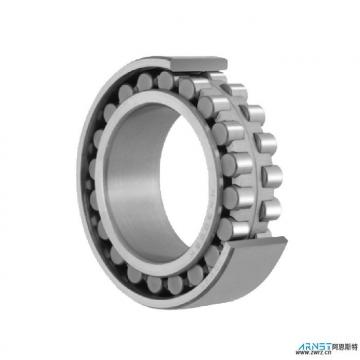 CRBH12025AUU Crossed Roller Bearing
CRBH12025AUU Crossed Roller Bearing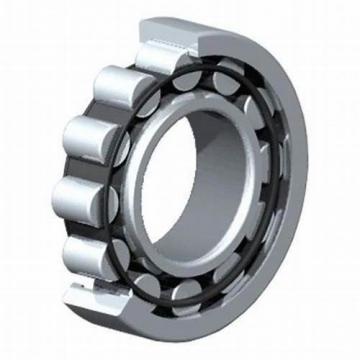 CRBH14025AUU Crossed Roller Bearing
CRBH14025AUU Crossed Roller Bearing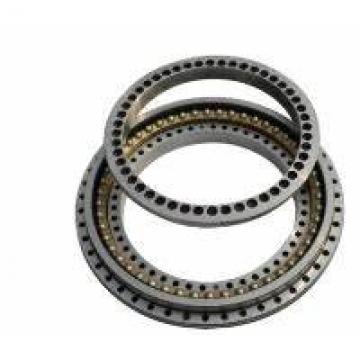 CRBH8016A Crossed roller bearing
CRBH8016A Crossed roller bearing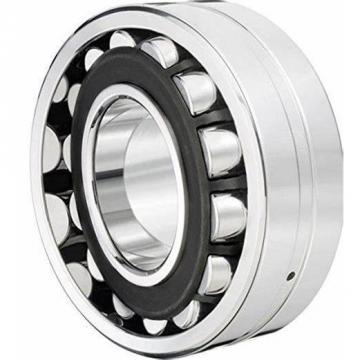 CRBH9016A Crossed roller bearing
CRBH9016A Crossed roller bearing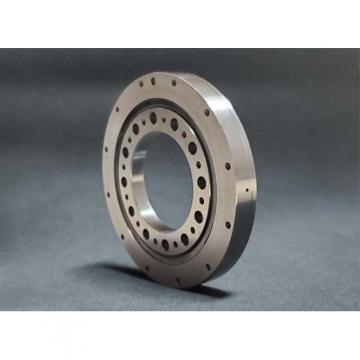 CRBH13025AUU Crossed Roller Bearing
CRBH13025AUU Crossed Roller Bearing